What's the problem?
Tracing marine litter back to the rivers is the logical solution. It means studying the whole riverine system — from water catchments in cities to meandering creeks, major rivers and artificial structures (e.g. canals, weirs and dams) that make up Europe’s complex waterways. It also means gathering better data on similar networks outside Europe.
Limited monitoring, weak data and uncertain analyses continue to hamper the study of marine litter sources and pathways, making informed policy and action harder to implement. Two positive signs are the EU zero pollution package putting forward new monitoring requirements for microplastics in wastewater, and the United Nations Environment Programme providing new guidance for monitoring and assessing plastic in freshwater systems. Both provide a baseline for evaluating riverine emissions in the future.
Policy highlight
Rivers are called Europe’s lifeblood for a reason. They nurture ecosystems; supply water, transport and power; and support economies across the continent. Yet we know little about the extent to which they contribute to marine litter problems. Poor data collection, analysis and modelling lead to uncertainty about the scale and scope of mismanaged plastic waste, in particular.

We have to go upstream — to rivers — to understand the marine litter problem
© Designed by Mark Thompson on Unsplash
How does litter reach the sea?
Rivers carry litter to the seas, where it continues to accumulate. Because we have limited information about the true extent of riverine litter, the Eionet ETC report uses estimations from two recent studies: González-Fernández et al. (2021) and Meijer et al. (2021).
‘floating items’ are discharged into European seas every year
On average, 626 million ‘floating items’ are discharged into European seas every year. However, estimates vary from a conservative estimate of 307 million items to a top-end estimate of 925 million items.
Nonetheless, it is clear that two hotspots bear the brunt of nearly 90% of riverine floating litter in Europe. The Mediterranean Sea is receiving the largest share — more than one third of the total floating litter discharged by the rivers modelled. With almost two-thirds, river mouths in the Black Sea contribute the largest share relative to the number of emission points.
Source: González-Fernández et al. (2021).
Explore different chart formats and data here
Where are Europe's marine litter hotspots?
In contrast to our limited knowledge of riverine pathways, we have robust data about the extent of litter in the marine environment. In the Eionet ETC report, the EEA demonstrates the use of prototype Marine Litter Assessment Tool (MALT), which is used to identify ‘problem areas’ and ‘non-problem areas’ on Europe’s coasts. Only about 25% of coastal areas assessed have ‘non-problem area’ status.
Note: For a more detailed explanation of the counting, coverage and analysis carried out using MALT, please consult the Eionet ETC report Marine litter in Europe: an integrated assessment from source to sea.
Explore different chart formats and data here
EEA efforts to identify and classify major ‘problem areas’ and compare them with ‘non-problem areas’ in Europe’s marine environment reveal a number of noteworthy hotspots. Evaluations are based on the assessment of sea floor litter, beach litter and floating microlitter data from 2010 to 2021 in different locations.

Explore the interactive maps
Although the area assessed in the Mediterranean region appears small, the data set on coastal pollution is comprehensive and geographically well-distributed. With 75% of the assessed area of Europe’s regional seas considered polluted, their current state is very concerning.
Policy highlight
Acknowledging the gaps in our understanding of the sources and pathways of marine litter, the ETC/ICM developed a novel Marine Litter Assessment Tool, or MALT, for the EEA. It provides a ‘multi-metric indicator-based assessment’ covering three main indicators: beach litter, sea floor litter and floating microlitter.
What do regional differences reflect?
Comparing the average amounts of plastic packaging and small non-packaging plastic items (PPSI) recorded on the beaches of the four European regional seas, the Baltic Sea has the least amount of marine litter, followed by the North-east Atlantic Ocean. The Mediterranean Sea and Black Sea are the most polluted. These variations reflect regional differences in the estimates of both mismanaged plastic packaging and PPSI waste in coastal regions, and in the modelled riverine discharges of floating macrolitter (González-Fernández et al., 2021).
Sources: (ETC/ICM, 2022a); González-Fernández et al. (2021); (ETC/ICM, 2022b).
Explore different chart formats and data here
Without radical and coordinated action from all levels of government and without individual behavioural changes, marine litter will continue to pose a threat to marine life and human health — and to key economic sectors that depend on coastal and maritime environments.
Marine LitterWatch
Since 2013, the EEA has been encouraging citizen scientists to collect real data on marine litter from beaches all over the world. The Marine LitterWatch (MLW) initiative has assembled a rich database fed by volunteer communities, individuals, civil society organisations, schools and other entities. Coastal beaches, riverbanks and lakeside beaches are all monitored under the MLW initiative. Clean-up and monitoring data reveal significant differences among the four European regional seas, which calls for a targeted analysis of each region as well as management measures.

Read more about Marine LitterWatch:
Policy highlight
Black Sea beaches are the most littered, followed by the Mediterranean beaches. Litter transported by rivers, coupled with improper municipal waste dumping and less awareness of the effects of littering on the environment in the Black Sea, could be the major reasons for this.
References
ETC/ICM, (2022a), Marine Litter Watch (MLW) 2021 European Beach Litter Assessment, ETC/ICM Report 6/2022, (ETC/ICM Report 6/2022: Marine Litter Watch (MLW) 2021 European Beach Litter Assessment — Eionet Portal (europa.eu)). Accessed: 09 January 2023
ETC/ICM, (2022b), Marine litter in Europe – An integrated assessment from source to sea. (ETC/ICM Report 5/2022: Marine Litter in Europe - An integrated assessment from source to sea — Eionet Portal (europa.eu)) Accessed: 11 January 2023
González-Fernández, D. et al., 2021, Floating macrolitter leaked from Europe into the ocean. Nature Sustainability 4, pp. 474–483 (https://doi.org/10.1038/s41893-021-00722-6) accessed 09 January 2023.
Meijer, L.J.J., et al., 2021, More than 1000 rivers account for 80% of global riverine plastic emissions into the ocean, Science Advances 7, (https://doi.org/10.1126/sciadv.aaz5803) accessed 09 January 2023.
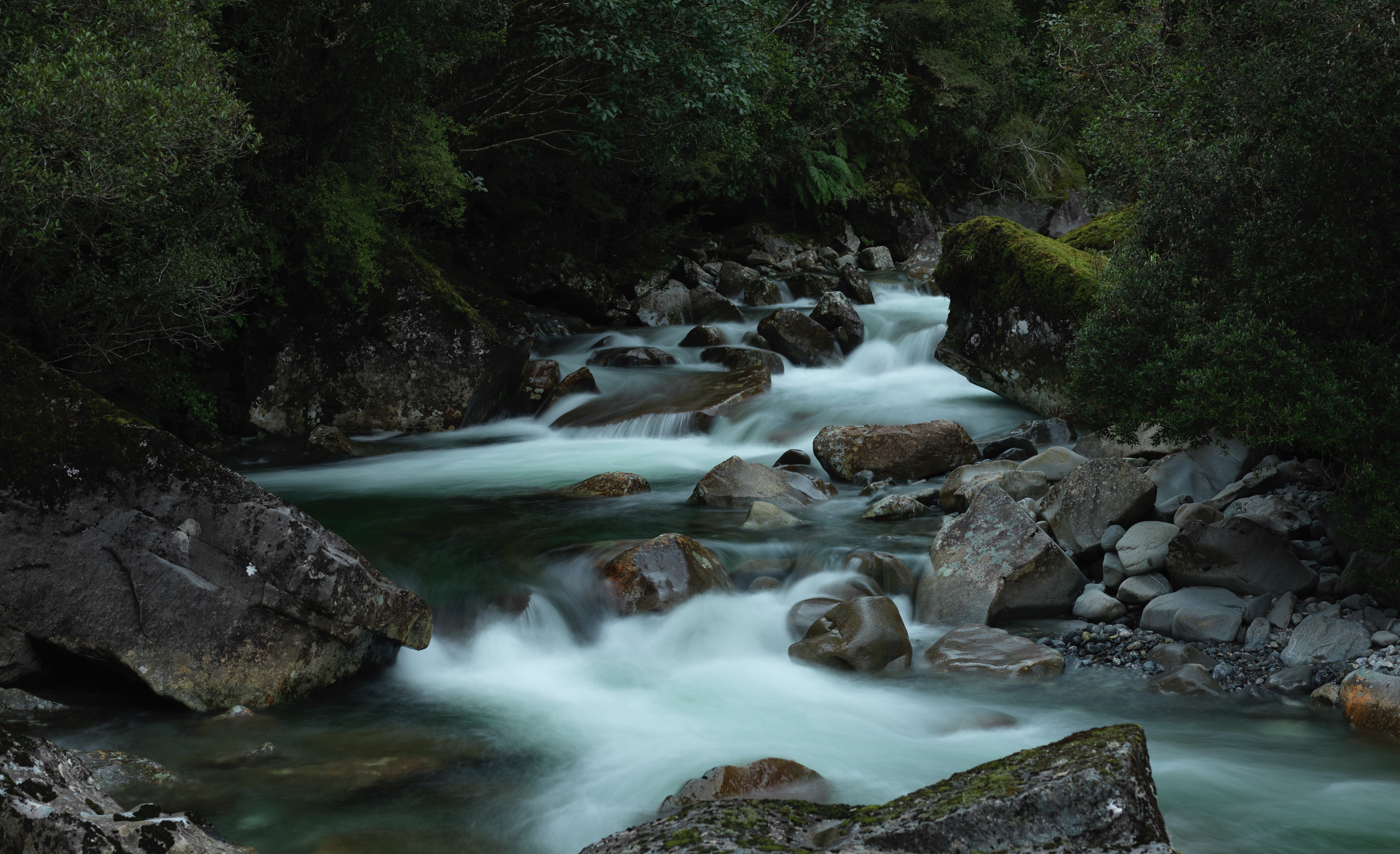
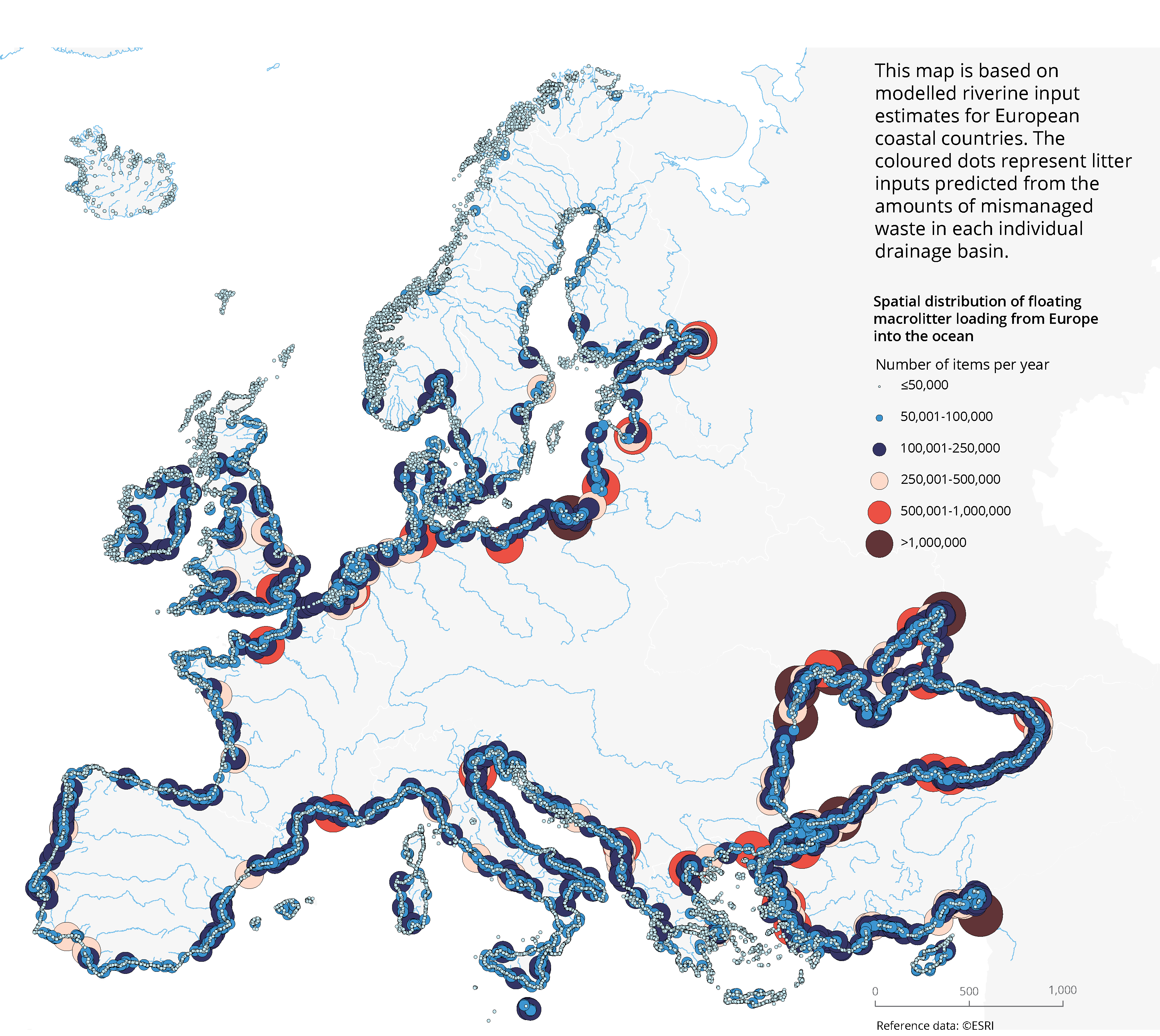
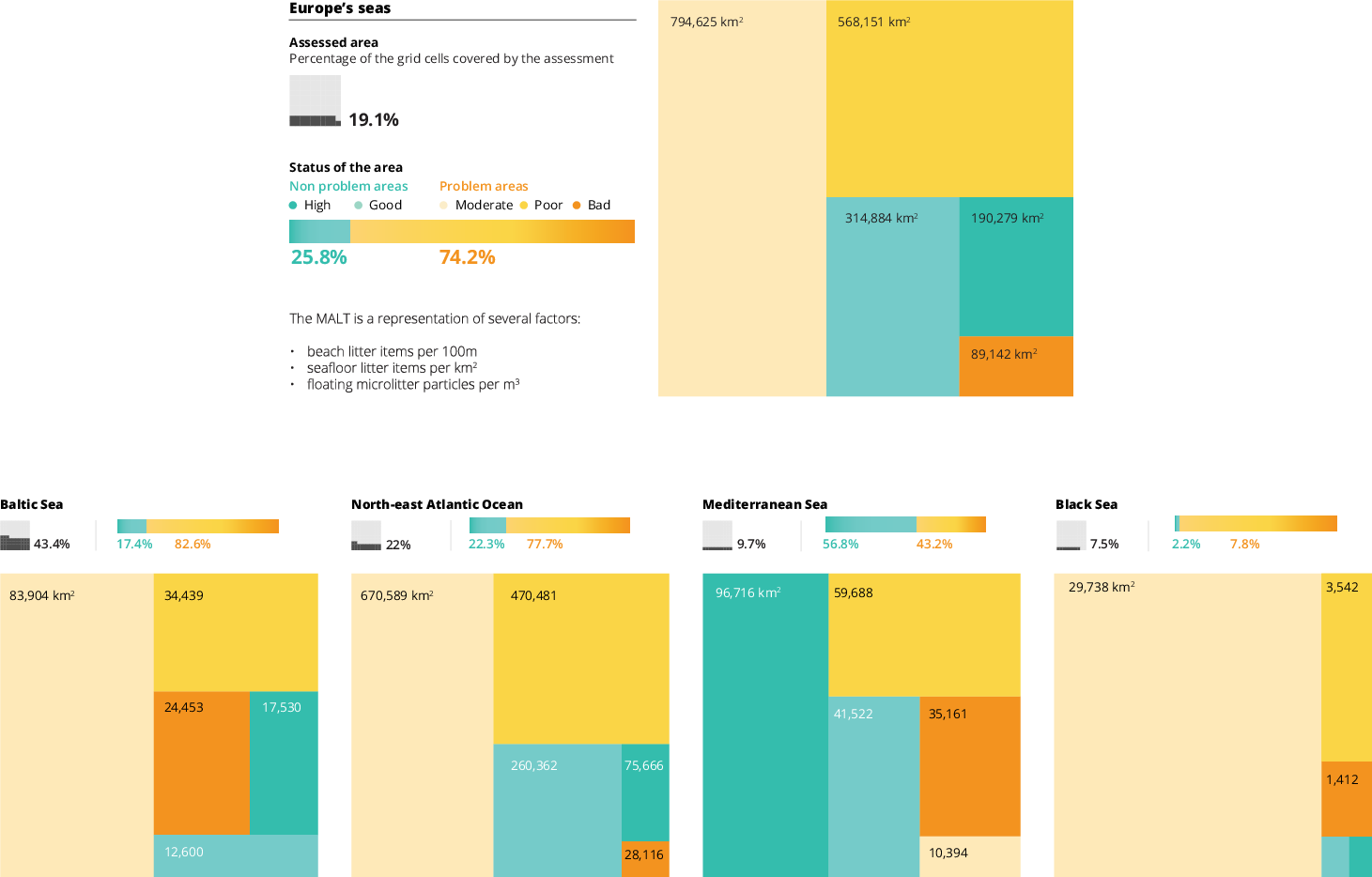
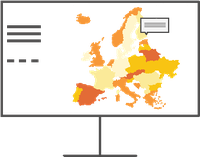

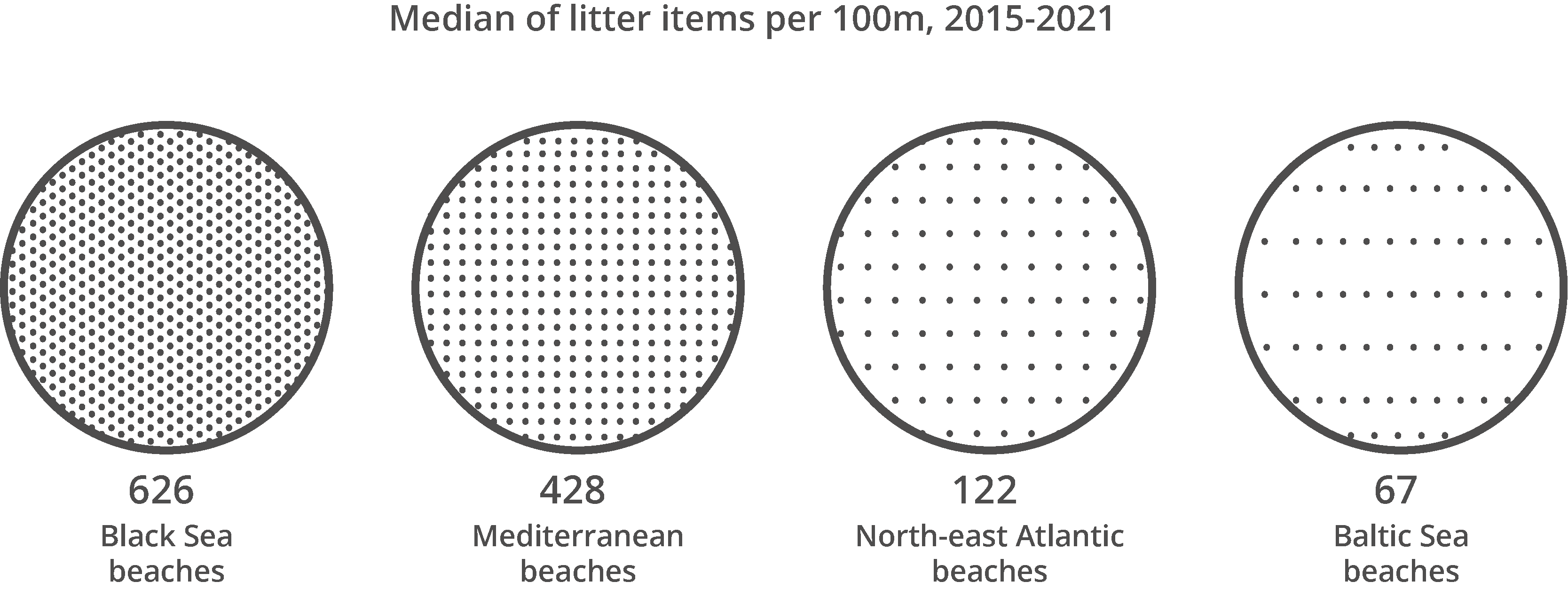
Document Actions
Share with others